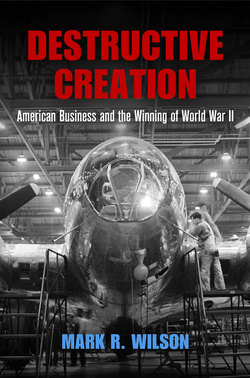Destructive Creation

Реклама. ООО «ЛитРес», ИНН: 7719571260.
Оглавление
Mark R. Wilson. Destructive Creation
Отрывок из книги
Destructive Creation
Series editors
.....
As the controversy over the Wheeler-Rayburn bill suggested, the Muscle Shoals fight had become part of a massive national political struggle over public enterprise. In the 1930s, a decade and a half after the end of Great War, progressive Democrats in Washington—now under the banner of the New Deal—were again making major intrusions into private industry. There were all sorts of public works and construction projects, built by several of the new “alphabet soup” of agencies. The largest of these, including the Civil Works Administration (CWA), the Public Works Administration (PWA), and the Works Progress Administration (WPA), each spent several billion dollars on construction. The PWA, which mostly paid private contractors to do the work, financed many big projects, including giant hydroelectric dams on the Columbia River in the Pacific Northwest. These operations were not entirely offensive, from the point of view of some businessmen, because they relied on private contractors. But the New Deal building agencies, like TVA, could also act as threatening rivals. The PWA actually worked hand in hand with the public power movement, by funding municipally owned electric utilities, some of which would buy electricity from the TVA or other public authorities.77 Even worse, from the point of view of private construction firms, was the use of “force account” projects, in which the government served as contractor and employer. This was the method often used by the CWA, and later by its successor, the WPA, which directly employed more than two million people at once. Both agencies were the subject of complaints about government competition, especially from private firms in the construction industry.78
The TVA, PWA, WPA, and other public enterprises were among the most powerful manifestations of the larger New Deal, which transformed the economic role of the national state. By the end of the 1930s, national government spending amounted to nearly 10 percent of GDP, almost triple what it had been in 1929. There were now one million civilian federal employees (leaving aside those employed temporarily by WPA), nearly double the number in 1930.79 The crisis of the Great Depression had helped usher in a more powerful, and more entrepreneurial, national state.
.....